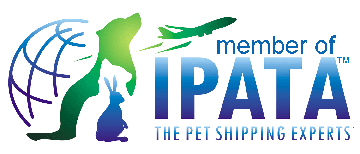UNDERSTANDING the DIFFERENCES between FLYING PETS as
MANIFESTED CARGO, EXCESS BAGGAGE
or IN-CABIN BAGGAGE
It is important to understand the difference between these three possible methods of transporting pets by plane, namely:
- 1. Manifested cargo
- 2. Excess Baggage
- 3. In-cabin
1.PET TRAVELLLING as MANIFESTED CARGO
At Manoir Kanisha, we are cargo specialists. We plan and make estimates accordingly. When your best friend travels as manifested cargo, the airline takes over responsibility for the pet during travel, not just for the container.
Your pet will travel on an Air Waybill (AWB) and the airline may require the consignee at destination to acknowledge an ‘OK-to-Forward’ before we can even load the animal on the plane at departure. This ensures that no pet is stranded on arrival because nobody came to collect. We can make cargo bookings on your behalf provided we have a full name, address, telephone and email address for the consignee receiving your pet.
We do realise that this is the most expensive means of transport, but it is the most secure, and several countries will ONLY allow entry as manifested cargo, notably GB, Australia, New Zealand, to name but a few.
2. PET TRAVELLING as EXCESS BAGGAGE:
In this alternative called excess baggage, the pet travels like any other excess suitcase. The airline will never take any responsibility for the pet, only for the container should it get lost, regardless of what is inside. Not every airline will allow excess baggage, but if they do the charge is nominal, typically $50-$150 per kennel. It varies by airline, route, and the size of the container. Only the owner can make this booking along with their own ticket. There is an upper limit to size and weight which varies by airline, as well as according to the route and destination.
On departure the passenger only receives a baggage ticket or receipt, just as for any other suitcase. The pet does not go down the baggage belt but will be taken directly by a handler as with any outsize item. The owner is wholly responsible for the animal, and it cannot travel in the passenger cabin on international flights. This is why your best friend must be housed in a rigid container up to IATA standards for travel in the forward hold which is heated, ventilated, air conditioned and illuminated, exactly as for the First Class passengers above.
The size of the container will depend on the breed and the dimensions of your pet. At Manoir Kanisha, we cannot make this type of booking for you because we do not know the status of your ticket or what your animal may be “in excess of”. We can however provide the expected weight and dimensions that will be asked for by the passenger desk.
3. PET TRAVELING as IN-CABIN BAGGAGE
In general in-cabin transport is only allowed in USA and Canada, subject to several restrictions as well as the policy of the airline. It is only very rarely allowed on any international flights. If allowed, it means that the container must fit under the seat (max 8 inches high) so this at best restricts such transport to very small pets such as rats, mice, geckos etc. The container must be large enough for the animal to sit stand and turn in its natural manner. As with Excess Baggage, the owner is responsible for making such a booking at the same time as their own ticket. The airline takes no responsibility whatsoever for the pet or container.
There are several reasons why in-cabin movement is not allowed. The airline does not know if the pet will smell, make a noise, or provoke allergies with other passengers. You are not allowed to release the pet in flight and must consider how water is to be provided without spilling.
The one exception to this would be a registered guide dog for a blind person. They are trained to operate quietly in a crowd. So-called ‘support animals’ are frequently fraudulent and thus seldom accepted by airlines unless the owner can provide internationally recognized certification for both dog and passenger.
VETERINARY CERIFICATION
Whichever method of transport is used, the veterinary preparations are exactly the same according to the country of destination. At Manoir Kanisha we can prepare all these veterinary steps and deliver the pet as required to Cargo (when travelling manifested) or to the passenger (when travelling as excess baggage).
You may question why a veterinary visit is required even for a domestic flight. The reason is simple: the airline has to know that your pet is ‘fit to fly’. The airline (and we) do not know your animal and responsible airlines will not accept your pet without this examination certificate. For all international flights, the appropriate International Health Certificate is always required as well as a current rabies vaccination certificate.
-=-=-=-=-=-
It is important to verify if your animal is fit for transport.
But, most important you should ask:
“Is this transport fit for my Best Friend?”



